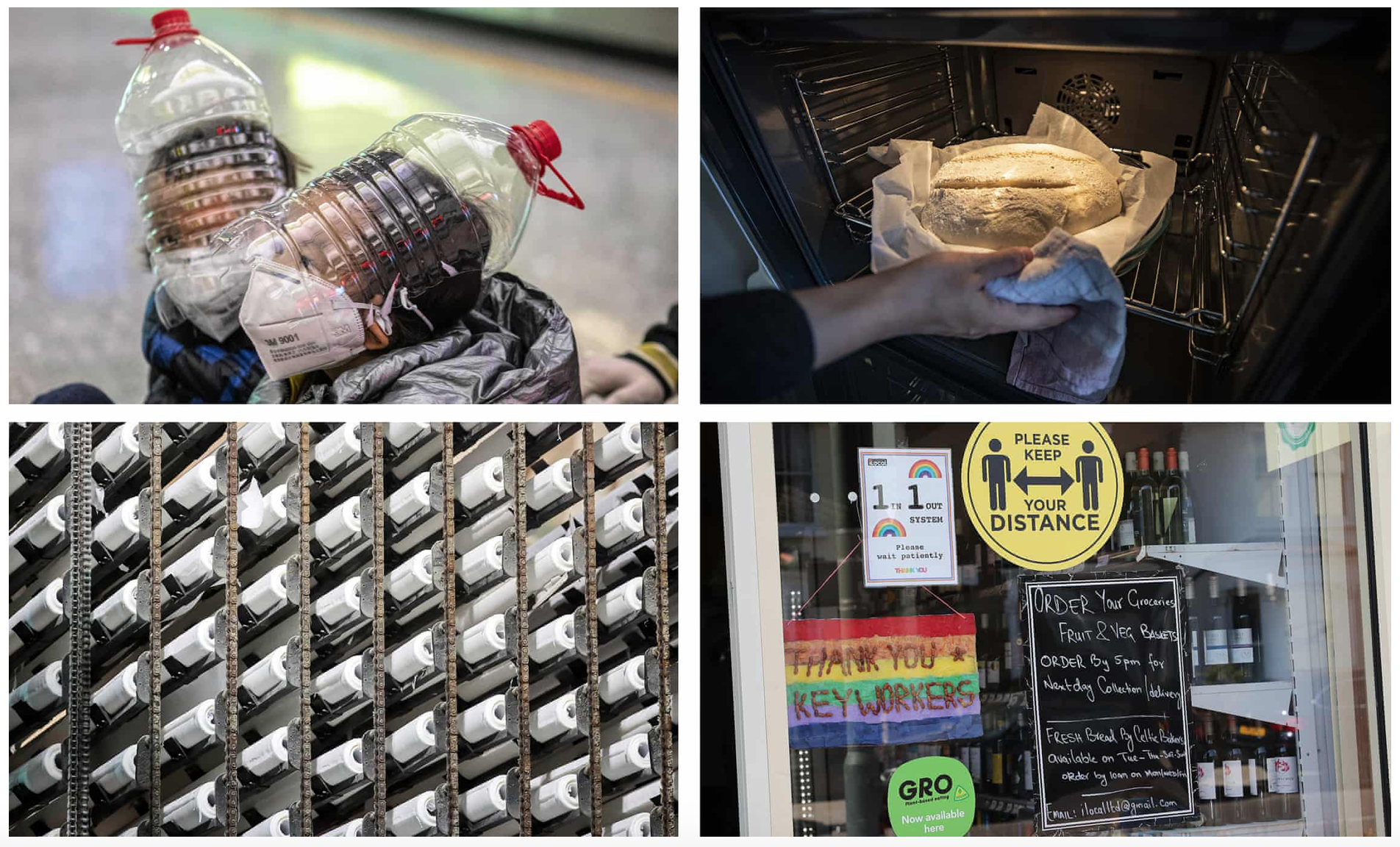The V&A is gathering the quirky, handmade, unpredictable objects that are getting us through quarantine
From the Guardian
There’s a good impetus, from a number of places, to ensure that we don’t forget the shifts and altered states of our lives in quarantine - before a “new normal” (but whose norms? as this week’s blog on polled attitudes asks) gets imposed and settled.
We’ve made our own small and mobile attempt to capture the mood with our app, Before&Now, which has built up a rich harvest of details about life before Coronavirus, and life now (click on the book icon here to see the collected responses so far).
But we spotted a particularly rich example from the Victora and Albert Museum in London this week - where they’ve launched something called “Pandemic Objects”. Their blurb below:
Pandemic Objects is an editorial project that compiles and reflects on objects that have taken on new meaning and purpose during the coronavirus outbreak.
During times of pandemic, a host of everyday often-overlooked ‘objects’ (in the widest possible sense of the term) are suddenly charged with new urgency.
Toilet paper becomes a symbol of public panic, a forehead thermometer a tool for social control, convention centres become hospitals, while parks become contested public commodities.
By compiling these objects and reflecting on their changing purpose and meaning, this space aims to paint a unique picture of the pandemic and the pivotal role objects play within it.
Very much worth doing. The Guardian’s feature on it charts a few of the shifts registered through these everyday objects, pushing the ideas that this is a “Museum of Coronavirus”:
Instead of rushing out to collect Covid ephemera, Cormier thinks the museum’s time would be better spent looking afresh at what’s right under our noses. “Is the pandemic revealing anything new,” he asks, “about things we take for granted?”
One of the first things to catch his attention [see this V&A blog] was the wealth of hastily drawn homemade signs cropping up in shop windows around the world, explaining new delivery services and warning people to keep 2m apart.
It seemed to say something about our relationship with technology and public messaging: the 1990s craze for inkjet printers promised everyone the professional finish of a publishing house in the comfort of their own home.
Yet, three decades on, most of us seem to have thrown out our printers, sick of clogged-up, eye-wateringly expensive cartridges, and have embraced the paperless society. “In the moment of need, when the situation is changing so rapidly,” says Cormier, “we’ve gone back to pen and paper.”
Putting signs in windows quickly spread to the home, too, as a means of both expressing community solidarity and keeping the kids occupied. Headteachers encouraged pupils to paint hopeful rainbows and stick them in windows, fuelling neighbourly rivalry with evermore elaborate formations, ranging from chalk to neon paint and Lego bricks.
It wasn’t long before this homespun movement was co-opted by the art world, with Damien Hirst offering his own butterfly-wing rainbow to download.
Catherine Flood, co-curator of the V&A’s Food exhibition last year, will examine how the pandemic has changed perceptions of certain kitchen-cupboard staples. Flour and yeast, more used to being spilled on surfaces and swept into bins, have become sought-after luxuries, as we all try to channel our inner bakers.
Instagram has become the Sourdough Olympics, awash with competitive posts, while flour mills are working around the clock to fulfil demand as wheat prices surge and well-stocked shelves become a rarity.
Traffic to the BBC’s basic bread recipe has risen faster than a cob in a 250-degree oven, with numbers up by 875%. But need does not seem to be what’s driving demand, as bread is still readily available in shops.
It’s the therapeutic quality of baking that’s the attraction, Cormier thinks, the tactile and meditative quality of the process, along with a desire to feel self-sufficient.
“Flour is now a privilege,” he says, and he doesn’t just mean being able to find it in shops. “To bake bread, you need to be able to work at home, and have time to invest. It’s probably not frontline key workers who have the pleasure of rediscovering the miracles of baking.”
As research for a potential future exhibition on accessibility in design, curator Natalie Kane has been looking at the door handle – a seemingly innocuous part of the built environment that has become a villain in the age of coronavirus.
Since early March, when it was first announced that the virus could survive on surfaces for up to three days, we’ve been elbowing and toeing our way through doors, suddenly aware of just how often we use our hands to navigate through the world. Could the pandemic finally force society to accept what disability groups have been campaigning about for decades – that such things are obstacles rather than aids?


